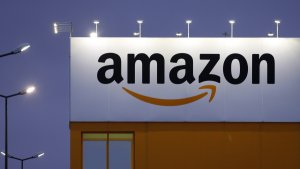Spreadshirt CEO On How He's Preparing To Battle Amazon
Is it possible to compete when the all-consuming ecommerce giant arrives in your market?

Ecommerce companies, and probably many others, look at Amazon with a mixture of fear and awe. We may well be customers of this internet giant, but we’re concerned about what would happen if this behemoth arrived in our particular space.
This happened to Spreadshirt in the summer of 2017, when Amazon appeared in our market. Established in 2002, Spreadshirt is a €100m, self-expression, ecommerce platform.
People use Spreadshirt to create clothing and accessories with messages they want the world to see. We then manage the printing, delivery, local taxes, commission payments and fulfilment.
In 2017, through our five production sites we printed and shipped designs on t-shirts, hoodies, mugs and all sorts of other clothing and accessories, to over 160 countries; 4.8m items were ordered through over 80,000 selling partners.
But the arrival of Merch by Amazon across the US and EU is shaking up the industry. I’m old enough to remember the pre-internet world of 28-day delivery schedules.
Today at Spreadshirt we print and deliver within two days, but elsewhere in the industry it can be as long as two weeks. Of course Amazon’s vision is to deliver inside two hours! If it can do this, it could take a $1bn share of the market in just a few years.
So is it possible to survive if Amazon arrives in your market? Can you hope to compete? Here’s what we’ve learnt?
It’s all about delivery
This isn’t just about speed and time slots. Do you know how your delivery compares to the rest of your sector; to Amazon? Can you benchmark it? We tested ourselves by selling via Amazon and saw exactly how our operations and delivery compared to theirs.
We discovered that to meet their demanding KPIs we had to put orders from Amazon customers ahead of our own. Still, it improved our operations. The likelihood is though, that this only makes you equal to Amazon, not better. This won’t be enough to surviving and compete. So what else?
Customers love a Specialist
No-one loves Amazon, not really. It’s commodity shopping, but not somewhere you go for inspiration or the fan experience.
Customers who really care about a particular market, and those seeking inspiration rather than plain fulfilment, will prefer a specialist with a clearer choice of goods and expertise in the market.
So you have to make this clear in your branding, range and user experience. You can develop customer trust in your market that will be stronger than Amazon.
Focus on what your business does best. Develop a deeper brand rather than broadening your scope. Yes, diversifying might generate new revenue streams, but that’s no help if you lose your reputation for expertise and your loyal customers. You are going to have to be clear and honest with yourself about what your business does.
Amazon is a very effective machine. But we found that one of the best ways to rage against the machine and demonstrate expertise, is with real people.
As a specialist, you need to have real and helpful customer service; for example, by making an advisory service available before the purchase. You can also bring your company alive by including your teams in marketing and social media; this shows that your company is staffed by real people who care and are experts.
Consider your other competitors
To survive and compete with Amazon you need to stay in the game. It helps if you are already profitable, but it’s also important to have quality of revenue. It’s not just about your rate of growth. If a faster-growing, profitable rival arrives, you’re going to need cash to ride out the storm, work out your response and implement it.
One response could be to merge with or acquire the competition. This might seem in direct contrast to the need to specialise, but Amazon also wins by scaling and gaining the best unit economics and price advantage.
You need to counter the 10% or 20% off that Amazon can offer and stop your customer from browsing on your site and then finding the equivalent on Amazon for less.
So you can’t just offer the same thing as Amazon, hence the need to specialise, but you also need to think about scale, which may come in the form of alliances, acquisitions or a merger.
Potentially several brands may merge or build multi-brand groups with combined operations and supply chains. Creating groups like this makes it possible to generate significant scale and unit economics that could beat Amazon.
So are we surviving the onslaught of Amazon and managing to compete? Yes. In response we’ve had to take a long hard look at ourselves and our plan for the future. Competing against Amazon is extremely tough.
To succeed, companies will need to offer an excellent, high-service and specialised brand; be brilliant for their customers. At Spreadshirt, our goal is to remain specialists, improve profitability and stay robust against our strongest competitor yet.
Philip Rooke is CEO of Spreadshirt.
Thanks for signing up to Minutehack alerts.
Brilliant editorials heading your way soon.
Okay, Thanks!


